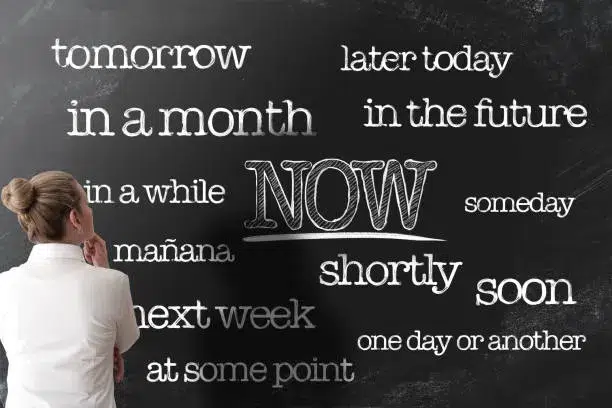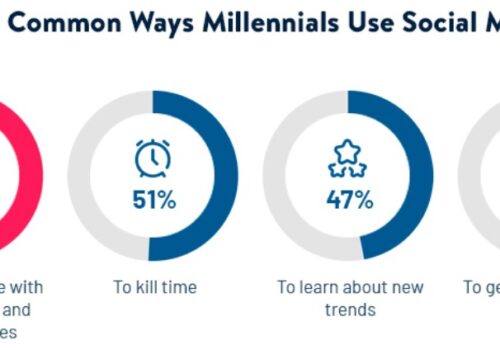Let’s explore the topic of procrastination, including its statistics, trends, and valuable insights.
According to Merriam-Webster, procrastination is defined as being sluggish or late in completing tasks because of laziness, among other reasons.
However, research suggests that procrastination is a complex issue that goes beyond mere laziness. Despite this, procrastination hasn’t been taken seriously in academia as many academics struggle with it themselves.
The reality is that most people who deal with procrastination are overworked and anxious, not lazy. To overcome procrastination, it’s important to understand its causes and how to address them. By doing so, you can potentially improve your life.
So, let’s delve deeper into this topic and discover why we procrastinate and what it means for our lives.
| Category | Statistics |
|---|---|
| General Prevalence | 20% of adults are chronic procrastinators; 25% consider it a defining personality trait. |
| Bedtime Procrastination | Affects twice as many women as men. |
| Procrastination Traits | Common in people with low self-confidence, task aversion, distractibility, and impulsivity. |
| Procrastination in Adults | 15-20% frequently procrastinate; 20.5% daily; 42.6% often or daily. |
| Procrastination in College Students | 50% chronically; 75% consider themselves procrastinators; 80%-95% procrastinate to some degree. |
| Internet Procrastination | 50.7% use the internet to procrastinate; 47% of online time spent procrastinating. |
| Procrastination Causes | Linked to mood control; associated with depression, anxiety, ADHD; strong correlation with feeling unable to stop (.64). |
| Effects of Procrastination | Linked to mental and physical health issues, 94% say it negatively affects happiness and can lead to a $15,000 salary drop; 57% of the unemployed are procrastinators. |
| Academic Procrastination | Common among 53% of high schoolers, 53% of undergraduates, and 61% of graduate students; negative correlation with academic performance. |
| Workplace Procrastination | 88% of workers procrastinate for 60+ minutes daily; average 2 hours and 11 minutes per day; increased post-COVID-19 (12.4%). |
| Other Insights | Mindfulness can help stay on task; weak positive correlation between gender and procrastination (.08); procrastinators are likely to be single and have a higher divorce rate. |
| Subgroups of Procrastinators | Mild (24.93%), average (27.89%), severe (21.69%), primarily depressed (11.55%), well-adjusted (13.94%). |
| Correlation with Conscientiousness | Strong negative correlation (-.62). |
| Trait Procrastination and Task Aversiveness | Positive correlation (.40). |
| Desire to Reduce Procrastination | Over 95% of procrastinators wish to reduce it. |
Procrastination Stats, Trends, and Insights 2025
Image credit: Pexels
- While everyone avoids unpleasant activities at some point in their lives, chronic procrastination is becoming more common.
- Only 5 percent of adults were deemed chronic procrastinators in the 1970s, but that number has since risen to 20 percent.
- Procrastination is a personality trait that 25% of adults claim is a defining feature of their personality.
- Procrastination, particularly types of bedtime procrastination, is becoming more widespread as the barriers separating work and life blur.
- Serious bedtime procrastination affects twice as many women as it does men.
- Procrastination is most common in people who have low self-confidence, difficulties setting realistic objectives, task aversion, and high degrees of distractibility and impulsivity.
- Around 20% of adults procrastinate chronically.
- 50% of college students procrastinate chronically; 75% consider themselves procrastinators; 80%-95% procrastinate to some degree.
- 50.7% of people frequently use the internet for procrastination; 47% of online time is spent procrastinating.
Procrastination Stats Prevalence
How common is procrastination nowadays?
- 15 percent to 20 percent of adults procrastinate on a frequent basis.
- Procrastination affects around 80% – 95% of university students, with 50% of them considering it a problem.
- According to one study, 88% of those polled postpone for a minimum of an hour daily.
- Procrastination affects more people than substance abuse, depression & alcoholism combined.
- 74% of people go to bed later than planned, at least once a week.
- Procrastination by location: Home (57%), School (40%), Work (32%).
- 20.5% of adults procrastinate daily.
- 42.6% of adults procrastinate often or daily.
Facts and Figures on The Effects of Procrastination
- Chronic procrastination is hazardous to one’s health. It’s been connected to a variety of adverse mental & physical health issues.
- Chronic procrastination has been shown in studies to have a negative influence on mental health, worsen stress, and reduce overall well-being.
- Procrastination, according to 94 percent of poll respondents, has a negative impact on their happiness.
- Frequent procrastinators are more prone to ailments such as headaches, colds, and stomach problems.
- Chronic procrastination has also been linked to hypertension and cardiovascular illness, according to a 2015 study.
- Underperformance, financial issues, and low self-esteem have all been related to procrastination.
- 94% of people say procrastination negatively affects their happiness; 18% say the effect is extremely negative.
- Each point increase in procrastination tendency can lead to a $15,000 salary drop.
- Procrastinators make up 57% of the unemployed.
Statistics on Academic Procrastination
Image credit: Pexels
- Procrastination is common in schools.
- Procrastination is common among pupils in high school, university, & beyond.
- Procrastination is common among 53 percent of high schoolers, 53 percent of undergrads, and 61 percent of graduate students.
- Undergraduates procrastinate the most when preparing term papers (46 percent), weekly readings (30 percent), and preparing for tests (28 percent ).
- Weekly readings (60 percent), preparing term papers (42 percent), and preparing for tests (39 percent) are the three areas where graduate students procrastinate the most.
- Over 80% of student responses about feelings post-procrastination are negative.
- There is a negative correlation between procrastination and academic performance, including assignment performance (-.21), final exams (-17), GPA (-.16), and overall academic performance (-.19).
- Procrastination in academic tasks: Writing term papers (46%), reading weekly assignments (30%), studying for exams (28%).
Statistics on Procrastination In The Workplace
- In the workplace, adults continue to deal with procrastination.
- On any given day, 80 percent of employees get a wage, and 76 percent of entrepreneurs procrastinate for 1 to 4 hours.
- For something like a $40,000 salaried worker, procrastinating three hours per day costs firms $15,000 per year.
- 88% of workers procrastinate for 60+ minutes daily.
- The average worker spends 2 hours and 11 minutes procrastinating at work per day.
- 12.4% of workers report increased procrastination post-COVID-19.
FAQs
😄 What is procrastination?
Procrastination is the act of delaying or postponing tasks or actions, often leading to unnecessary stress and last-minute rushes.
📊 How common is procrastination?
Procrastination is a widespread behavior, with a significant portion of the population admitting to procrastinating at times.
🤔 Are there different types of procrastinators?
Yes, research suggests that there are different types of procrastinators, including chronic procrastinators and situational procrastinators.
🧐 How can procrastination impact mental health?
Procrastination can contribute to increased stress, anxiety, and feelings of guilt or self-doubt, which can negatively affect mental health.
🚀 Are there effective strategies to overcome procrastination?
Yes, strategies like setting clear goals, breaking tasks into smaller steps, and managing time efficiently can help individuals overcome procrastination.
💼 What is the economic impact of procrastination in the workplace?
Procrastination can lead to reduced workplace productivity and increased costs due to missed deadlines, potentially impacting the overall economy.
Quick Links:
- Top Video Marketing Stats
- E-Learning Stats and Trends
- Logo Statistics
- Social Network Usage Stats
- TikTok Statistics
- Blogging Statistics
- Mobile eCommerce Statistics
Conclusion: Procrastination Stats 2025
Procrastination is a common behavior that can lead to missed deadlines, increased stress, and reduced productivity. However, it can be effectively managed through various strategies.
It’s important to understand the root causes of procrastination, such as issues related to motivation and time management, in order to overcome it. Overcoming procrastination can lead to improved efficiency and reduced stress levels.
Many people may feel stuck in their procrastination habits, but this need not be the case. Learning additional mood-regulating skills and practicing self-forgiveness and mindfulness can help individuals overcome procrastination.
Therefore, it’s essential to be kind to oneself and start taking action.
Sources: goodtherapy, medium, edutopia, ipedr, statista, hecreativeshour, nytimes, universityaffairs, verywellmind








